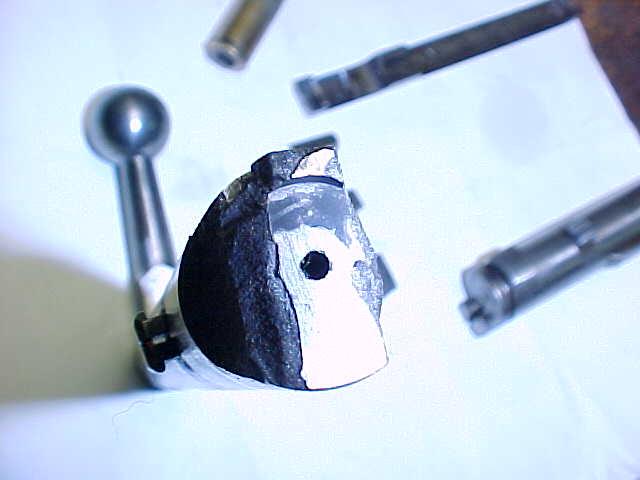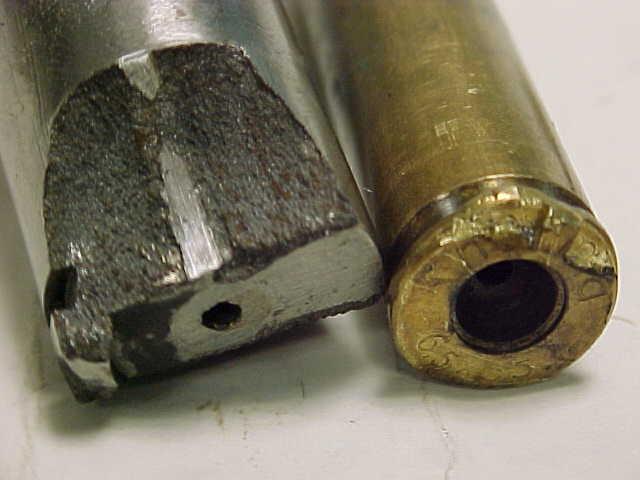-
Legacy Member


Originally Posted by
ssj

Ive read a few comments in my travels of google that the steel of the Savage made receivers was better quality (no defination of what that means mind). Since it looked like the comments came from Americans where everything is always better, it may well be bull....or is there some truth to this?
Really? Have you talked to a Brit lately? Spitfire, Mosquito, Lancaster, Enfield, .38-200(!), ALL the best! Or a German- K98 , MG42, ME 109, steel, optics, music- all the best! Or a Frenchman- music, food, language, style- all the best. I think in fact the only nationals that are NOT braggarts are Canadians, Yanks, and Italians. Oh, and Aussies.
, MG42, ME 109, steel, optics, music- all the best! Or a Frenchman- music, food, language, style- all the best. I think in fact the only nationals that are NOT braggarts are Canadians, Yanks, and Italians. Oh, and Aussies.
Sorry, not meant to be a flame but I do get annoyed with stereotyping.
-
-
08-11-2013 07:52 PM
# ADS
Friends and Sponsors

-
Legacy Member

A lot of HY80 is used in surface ships as well. They have a projected life span of 30-40 years.
-
-
-
FREE MEMBER
NO Posting or PM's Allowed

Surface ships dont dive often....not more than once anyway.
-
FREE MEMBER
NO Posting or PM's Allowed

-
FREE MEMBER
NO Posting or PM's Allowed

Sufficient unto the need. My LE has served me quite well throughout my well extended life and I think I´ll stick with it for what´s left of the rest. Mausers are much better made and LEs are a bit rough around the edges. But that´s life.
PS
@ bob4wd: "I think in fact the only nationals that are NOT braggarts are Canadians, Yanks, and Italians. Oh, and Aussies."
Are you really sure about that?
Last edited by villiers; 08-12-2013 at 02:39 AM.
-
Contributing Member


Bob4WD, if, speaking hypothetically, "Canadians, Yanks, and Italians. Oh, and Aussies" were to turn their hand to being "braggarts" (which of course has never happened, and never could happen...), what subjects would you recommend they should boast about? They'd have just too many choices, I expect.
Last edited by RobD; 08-12-2013 at 04:15 AM.
-
-

Originally Posted by
breakeyp

1. Only steel is considered to have an infinite life (if the iron moths stay away). I was told Aluminum has an effecive life of 40 years. Memo to those who gad about in WWII period airplanes. Interestingly, I was never exposed to how to work this information into calculations or factors of safety or how the failure mode would develop.
I've not seen any documentation on intergranular growth in steels yet, plenty on "fatigue", which often looks like some sort of embrittlement. Would enjoy seeing studies, though, if y'all could link some. ASME, SAE, ASTM, etc. or other countries' equivalents.
As for the degradation of aluminum alloys, it must be an environmental thing. The usual mechanism being "intergranular" corrosion. There's plenty of WWII bits at the shop which are brittle as can be. Other pieces of the same alloy are not badly degraded at all, but are from different recovery sites. As far as a 40 year life, there's 1930s DC3s still at work, and subject to FFA commercial inspections. Not to mention DC9s, B52s, etc.!
-
The Following 4 Members Say Thank You to jmoore For This Useful Post:
-
Advisory Panel


When I heard these things I was a Junior and afraid to question what I was told. They just stuck with me. I remember he was specific about short life of aluminum.
As for submarines, the diving and surfacing results in hull expansion and contractions which are the same a work hardening. The same as bending a piece of wire back and forth and it will eventually break.
I wonder how they determine metal fatigue other than looking for cracks? metals investigatins tend to be after the failure. I am under the impression that the old planes are less in number flying every year. Crashes or failed frame annuals? Not my area of expertise.
-
-
Legacy Member


Originally Posted by
villiers

Sufficient unto the need. My LE has served me quite well throughout my well extended life and I think I´ll stick with it for what´s left of the rest. Mausers are much better made and LEs are a bit rough around the edges. But that´s life.
PS
@ bob4wd: "I think in fact the only nationals that are NOT braggarts are Canadians, Yanks, and Italians. Oh, and Aussies."
Are you really sure about that?
You miss the point.
-
-
Legacy Member

Not a metallurgical engineer, but my company employed one and spent many happy hours talking about steel with him (we use a lot of stampings, our engineer was a ex GM automotive engineer named Frank Mittal). We also had the 17 volume ASAI metals manuals and I have spent many an hour tracking down some factoid or in an attempt to understand some issue related to steel use.
I do not ever recall him saving that steel had an end life. When we spoke of failures the primary thing I recall was ductile (shape change) and fracture failures (broken part) both had to deal with the elastic modulus of the part being exceeded. Thus a part that is too brittle will fail as a fracture when the elastic modulus is exceeded, while if the part is sufficiently ductile it will fail in shape, rather than in a fracture.
Now as the steel ages the degree of hardness will change as I recall, depending on the heat treatment, composition and the environment it is stored in. Also corrosion will affect the strength of the steel.
In older pain carbon steel parts, the degree to which phosphorus and sulfur inclusions exceed the proscribed steel composition will have a large effect. For example many of the defective low number M1903 rifles that had fracture problems had excessive sulfur and phosphorus content, to the degree that in some cases there were noticeable inclusions within the steel grain. That would most surely affect the long term stability of the weapons steel integrity.
Certainly in order arms of the 19th century the ability of the mills to regulate the impurities was sufficiently lacking that the issues raised by folks here might result in some failures due to internal flaws induced by inclusions to grow over time. This would most certainly apply to Damascus iron barrels, with the many inclusions that they are known to contain.
In any case from what I have read about Mauser Werke and its use of low carbon steel after about 1910, as long as the steel was within the proscribed limits of the raw material, the weapons does not suffer from more than light surface corrosion and the loads fired are within the pressure envelop, you will have a service expectation far past our lifetimes based on steel life alone. The rifles will wear out 5 to10 barrels under normal service before the internal wear on the lug surfaces reduces the action to scrap.
-
The Following 2 Members Say Thank You to Frederick303 For This Useful Post:
, MG42, ME 109, steel, optics, music- all the best! Or a Frenchman- music, food, language, style- all the best. I think in fact the only nationals that are NOT braggarts are Canadians, Yanks, and Italians. Oh, and Aussies.















 PM
PM








 [COLOR="black"]
[COLOR="black"]




